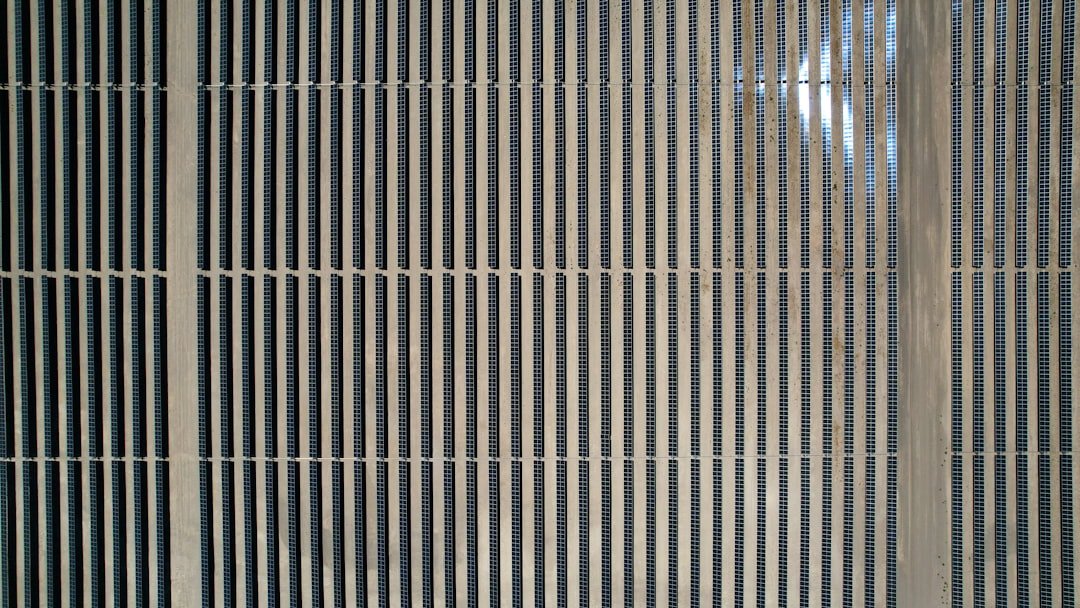A Complete Guide to Solar Panel Energy Solutions In the pursuit of sustainable energy, solar panel energy solutions have become essential. By capturing sunlight and turning it into electrical power, these systems offer a sustainable energy source that can drastically lessen dependency on fossil fuels. The efficiency and affordability of solar panels have increased due to a significant evolution in technology over time. Photovoltaic (PV) cells, the core of solar panels, use the photovoltaic effect to directly convert sunlight into electrical power.
Key Takeaways
- Solar panel energy solutions harness the power of the sun to generate electricity for homes and businesses.
- When choosing a solar panel system, consider factors such as energy needs, available space, and budget.
- Efficient solar panel installation involves proper positioning, regular maintenance, and compliance with local regulations.
- Regular maintenance is key to maximizing energy production and extending the lifespan of solar panels.
- Integrating energy storage solutions and smart energy management systems can further enhance the efficiency of solar panel energy solutions and maximize cost savings.
In addition to helping achieve energy independence, this process is essential for lowering greenhouse gas emissions & preventing climate change. Beyond its positive effects on the environment, solar energy has other advantages. Businesses and homeowners alike are realizing more & more the financial benefits of solar panel installations.
By producing their own electricity, consumers can reduce their utility costs and safeguard themselves against volatile energy costs. To further promote the use of solar technology, numerous governments also provide incentives like tax credits and rebates. As more people become aware of these advantages, interest in solar panel energy solutions increases as well, making it a desirable choice for investors hoping to make a sustainable future. To maximize the advantages of solar energy, choosing the right solar panel system is essential. Finding the ideal fit for a person or business involves a number of considerations. One must first evaluate their patterns of energy use.
The size of the solar system needed to meet those needs can be determined with the aid of knowledge about daily electricity consumption. An extensive energy audit can reveal areas for possible energy efficiency improvements as well as periods of peak usage. The kinds of solar panels that are made available on the market are another crucial factor. Thin-film, polycrystalline, and monocrystalline panels are the three main varieties. Monocrystalline panels are a common option for residential installations because of their excellent efficiency and elegant design.
| Metrics | 2019 | 2020 | 2021 |
|---|---|---|---|
| Number of Solar Panels Installed | 1000 | 1500 | 2000 |
| Energy Output (kWh) | 1,000,000 | 1,500,000 | 2,000,000 |
| Efficiency Improvement (%) | 10% | 15% | 20% |
Even though they are marginally less effective, polycrystalline panels are frequently less expensive and can be a good choice for larger installations where space is not an issue. Although thin-film panels are flexible & lightweight, which makes them perfect for unusual applications, their efficiency is typically lower. Users will be assisted in making an informed choice by weighing these options against available space and financial constraints. Solar panel installation must be done effectively to guarantee the system’s longevity and peak performance. Choosing a qualified installer with a track record of success is one of the first steps in this process.
It can be helpful to look for a trustworthy expert who is aware of local laws and best practices by researching local contractors, reading reviews, and getting referrals. In addition to ensuring proper mounting, a competent installer will maximize the panels’ orientation & tilt angle to receive the most sunlight possible all year long. An effective installation requires careful planning in addition to selecting the best installer. This involves assessing the location for possible shade from structures or trees that might block sunlight. Whether the panels are placed on rooftops or as ground-mounted systems, the ideal location will be determined with the aid of a comprehensive site assessment.
Also, delays & future expenses can be avoided by making sure that all required permits and approvals are acquired prior to installation. Businesses and homeowners can create the conditions for a successful solar panel installation by following these steps. To guarantee that solar panels function at their best after installation, routine maintenance is essential. The panels’ surface may eventually become covered in dust, grime, and debris, which would block sunlight and lower energy output. Frequent cleaning is crucial, particularly in places with high dust or pollen concentrations.
To guarantee a safe & efficient cleaning, homeowners can either hire a professional cleaning service or clean the panels themselves with a soft brush and water. Apart from cleaning, routine inspections are required to spot any possible problems before they become serious enough to require expensive repairs. This involves inspecting the inverter, which transforms DC electricity produced by the panels into AC electricity used in homes, for wear, loose connections, or damaged wiring.
In order to preserve warranties and guarantee peak performance, many manufacturers advise yearly inspections by qualified technicians. Users can increase their energy output and prolong the life of their solar panel systems by giving maintenance top priority. In addition to solar panel systems, energy storage solutions have grown in importance. While energy storage systems enable users to store excess energy for use at night or during periods of low sunlight, solar panels produce electricity during the day. This feature guarantees that users can depend on their solar systems even when the sun isn’t shining, improving energy independence.
There are several kinds of batteries made for solar energy storage, such as lead-acid and lithium-ion batteries. Because of their superior efficiency, extended lifespan, and small size, lithium-ion batteries are preferred for use in homes. Conversely, although lead-acid batteries are less expensive, they usually have shorter lifespans and lower efficiency levels. Users can choose the energy storage solution that best suits their needs by taking into account their available space, budget, and energy requirements.
It is crucial to keep an eye on solar panel performance to make sure systems continue to run effectively over time. Monitoring systems that offer real-time data on energy production and consumption are a common feature of contemporary solar installations. With the help of these systems, users can monitor the amount of electricity produced & spot any irregularities that might point to system problems.
With regular performance data reviews, users can further optimize their solar panel systems. An unexpected decrease in energy production, for example, can indicate that cleaning or maintenance is necessary. Also, users can modify their energy consumption patterns to optimize savings by being aware of peak production periods. Users can make sure that their solar panel systems continue to provide the best results by keeping a close eye on performance and making the required adjustments. An important development in solar energy optimization is the use of smart energy management systems, or SEMS.
Through the integration of multiple technologies, these systems enable real-time monitoring and control of energy consumption, empowering users to make well-informed energy-related decisions. SEMS is able to automatically modify settings in order to optimize efficiency by evaluating data from solar panels, batteries, and household devices. For instance, during periods of high production, a smart energy management system can prioritize using solar-generated electricity while storing extra energy for later use. These systems can also offer insights into patterns of energy consumption, assisting users in locating chances to save even more money by altering their behavior or making additional purchases of energy-efficient appliances. Users can boost the advantages of their solar panel systems and improve their overall energy management strategy by utilizing smart technology.
The financial ramifications of implementing solar energy solutions are substantial and complex. Buying & installing a solar system may come with upfront costs at first, but these are frequently compensated for over time by lower electricity bills. Over time, homeowners can save a significant amount of money by reducing or even eliminating their dependency on the electrical grid by producing their own power. In addition, many areas provide financial incentives that let users sell extra electricity back to the grid, like tax credits, rebates, or net metering program.
These incentives have the potential to dramatically shorten the solar investment payback period and increase overall cost savings. Also, since solar technology acts as a hedge against future price increases, investing in it becomes more alluring as utility rates continue to rise. Users may optimize their cost savings & help create a more sustainable future by being aware of these financial dynamics and utilizing the incentives that are offered.
In conclusion, solar panel energy solutions provide a thorough method of utilizing renewable energy sources with substantial financial & environmental advantages. People and businesses can fully utilize solar energy in their lives by knowing how these systems operate, selecting the best configuration, making sure that installation and maintenance are done efficiently, integrating storage solutions, using smart technology, and applying available incentives to maximize cost savings. Solar energy is positioned to become even more important in determining a sustainable future for future generations as awareness and technology continue to grow.



